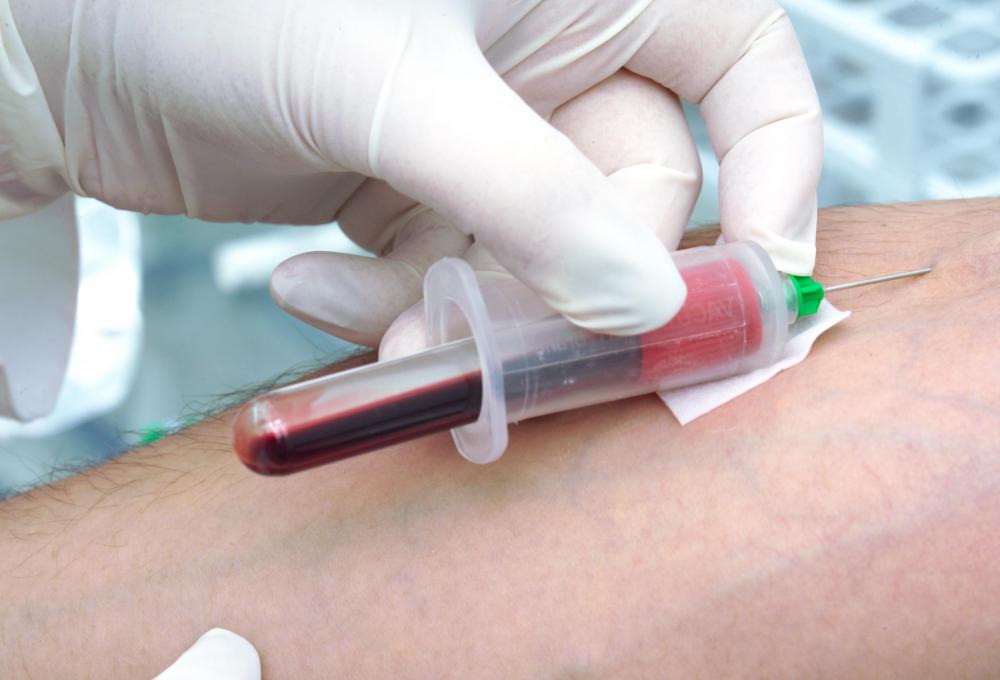At WiseGEEK, we're committed to delivering accurate, trustworthy information. Our expert-authored content is rigorously fact-checked and sourced from credible authorities. Discover how we uphold the highest standards in providing you with reliable knowledge.
What Is Venipuncture Training?
Venipuncture training teaches the theory and practice of safely extracting blood from a human or animal. This training includes a good deal of background education on topics such as safety procedures, to ensure that blood is drawn with minimal risk to both the patient and the technician, known as a phlebotomist, who performs the procedure. Such training includes a practical element as well, during which a student learns and practices the specific techniques used to make different types of blood draws from a variety of patients. Special venipuncture techniques and training are required for veterinary medicine, as there are special challenges involved in drawing blood from animals.
A course of venipuncture training will typically begin by teaching appropriate safety precautions and proper preparation techniques for the procedure. A technician needs to learn which forms and authorizations are required, so that these can be checked before blood is drawn. Training also focuses on the skills needed to assess patient condition. A phlebotomist needs to exercise caution when working with patients who are distressed either physically or psychologically.

The next set of skills usually taught in venipuncture training involve selecting the proper tools and venipuncture sites for the procedure. This type of procedure is most often performed with a needle, but a lancet is used in some cases, especially when only a small amount of blood is needed or when working with the young. Proper safety procedures are also emphasized at this stage in venipuncture training. This is important both to minimize the risks to those undergoing venipuncture and to ensure that the phlebotomist is not exposed to any blood-borne pathogens.

The actual drawing of blood is central to venipuncture training, and phlebotomists are taught proper techniques for locating and tapping veins. The order in which blood is drawn for different types of collection equipment and procedures is important, and this is explained during training. Proper use of equipment to prevent excess loss of blood is addressed, as is proper practice for treating the site of a blood draw after the procedure has been completed.

Patient handling skills are important for phlebotomists as well. Many patients have adverse reactions to having blood drawn, and venipuncture training usually includes discussion of how to anticipate these adverse reactions. Good patient assessment and communication skills are particularly important in this part of venipuncture training, as some patients may be reticent to admit their concerns about having blood drawn.
Proper handling of blood and blood products is also part of venipuncture training. Phlebotomists must learn to keep specimens sterile and properly labeled. Blood collected for use in transfusions or other procedures must be stored and labeled properly. A knowledge of proper administrative procedures is crucial at this point.
AS FEATURED ON:
AS FEATURED ON:













Discuss this Article
Post your comments